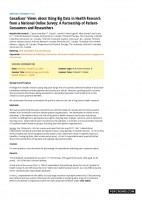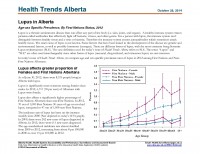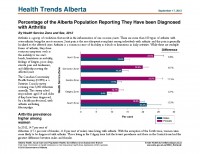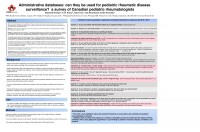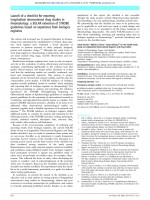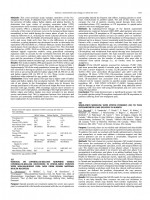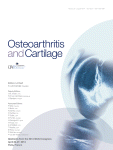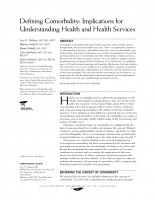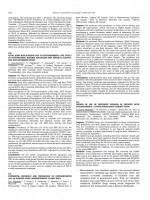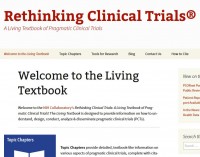This section includes posters and medical presentations that are used to communicate and highlight research, key findings and results.
Sort presentations by origin:
| Date: | March 9, 2020 |
Health Analysis Division - Statistics Canada
Thursday, October 3rd, 2013
CANRAD Network Webinar
| Author: | Claudia Sanmartin, PhD, Gisèle Carrière |
| Category: | Presentations |
| Date: | October 4, 2013 |
Consensus statements for best practices when using administrative data for rheumatic disease research and surveillance.
CANRAD Network Authors: D. Lacaille, L. Lix, C. Bombardier, S. Bernatsky, J. Askling, A. Aviña-Zubieta, E. Badley , C. Barber, C. Barnabe, S. Benseler, L. Bergeron, L. Bessette, B. Bobechko, C. Cooke, J. Curtis, W. Dixon, C. Duffy, S. Edworthy, B. Elias, D. Feldman , P. Fortin, J. Hanly, G. Hawker, J. Henderson, M. Hudson, S. Jean, J. Kopec, B. Kuriya, J. Labreque, A. Leeong, D. Levy, S. Lim C. Mackay, P. McCrea, P. Nestman, K. Oen, M. Patterson, C. Peschken, D. Power, E. Rahme, A. Rosenberg, L. Rochette, N. Shiff , E. Silverman, C. Sirois, M. Smith, D. Solomon, G. Soon, E. Stringer, S. Suissa, L. Svenson, L. Tucker, E. Vinet, J. Widdifield.
| Author: | CANRAD Network |
| Category: | Consensus Statements and Best Practices |
| Date: | July 23, 2013 |
Download
Using a bilingual online survey, we ascertained Canadians’ views about using administrative databases and other publicly-collected data for health research. Respondents were generally supportive (by the end of the survey, 93% felt positively about this work), but wanted to learn more about the data access and security measures, including the role of data stewards. Our findings suggest that more education may increase public trust and support for this important research.
Document Link: https://acrabstracts.org/abstract/canadians-views-about-using-big-data-in-health-research-from-a-national-online-survey-a-partnership-of-patient-consumers-and-researchers/
| Author: | Natalie McCormick, Clayon Hamilton, Cheryl L. Koehn, Kelly English, Allan Stordy, Linda Li |
| Requirements: | PDF Reader |
| Category: | Presentations |
| Date: | October 12, 2018 |
Health Trends Alberta October 28, 2014
Lupus in Alberta
Age-sex Specific Prevalence, By First Nations Status, 2012
In today’s issue of Health Trends Alberta, we compare age and sex-specific prevalence rates of lupus in 2012 among First Nations and Non-First Nations Albertans.
| Author: | Alberta Health, Health System Accountability and Performance, Surveillance and Assessment Branch |
| Requirements: | PDF Reader |
| Category: | Presentations |
| Date: | November 12, 2014 |
Health Trends Alberta shows self-reported prevalence of arthritis by zone and sex for 2012.
| Author: | Health Service Zone and Sex, 2012 |
| Category: | Presentations |
| Date: | September 17, 2013 |
Administrative databases: can they be used for pediatric rheumatic disease surveillance? a survey of Canadian pediatric rheumatologists
Poster
| Category: | Presentations |
| Date: | August 31, 2013 |
Rheumatology Billing Practices in Canada: A Survey
Poster Presentation
| Category: | Presentations |
| Date: | August 31, 2013 |
Download
The advent and increased use of targeted therapies in rheumatology have stimulated the establishment of clinical drug registers. Such registers have evaluated a broad spectrum of outcomes in patients exposed to these uniquely designed, potent and expensive drugs.1–8 Although the main focus of most drug registers in rheumatology is drug safety, other important issues include drug usage, real-life effectiveness and economic consequences.
| Author: | Jakub Zavada, William G Dixon, Johan Askling and for the EULAR Study group on Longitudinal Observational Registers and Drug Studies |
| Category: | Research Papers |
| Date: | December 14, 2015 |
Download
Purpose: Currently, there are no reliable and validated tools that health service decision-makers can use to inform system level policy decisions. To address this need, we worked with health administrators, clinicians and researchers to create and validate a decision-support tool that service planners can use to achieve a sustainable, integrated care system for hip and knee osteoarthritis (OA).
Methods: The tool is based on a system dynamics (SD) model of patient flow across the continuum of care, including self-directed, primary, rheumatologic and orthopaedic specialist, acute, and surgical follow-up care. The model was developed in four phases: phase 1 focused on demand and flow rates, phase 2 on resource use and costs, phase 3 on geographical stratification, and phase 4 on adding feedback loops. We populated the model with data from several sources, including Alberta Health & Wellness (e.g. physician claims, inpatient, and ambulatory data), Statistics Canada (e.g. the Survey of Living with Chronic Diseases in Canada and population projections), and the Alberta Bone and Joint Health Institute (clinical/surgical data). Using established principles of SD modeling and an iterative, integrated knowledge translation process involving multiple workshops with front-line clinical staff and administrators, we defined the problem, determined the care process, modeled the system as a series of stock and flows, tested, validated and calibrated the model.
Results: We have developed the full SD model, for two key applications. First, it can help identify flow, resource use and cost variations in current practice, which may benefit from further exploration. For example, variations in practice patterns, particularly surgery rates and resource use, were observed among the health zones reflecting regional differences. Second, it can be used to explore the effects of various ‘what if’ scenarios that can demonstrate system wide and long-term effects that may result from changes in care processes. For example, two scenarios examined were: “What would happen if 1) primary care providers could manage more patients medically, ultimately referring fewer patients to specialists; and 2) primary care providers in all health zones adopted one zone's rheumatologist referral patterns for OA patients?” Such scenarios change the pathways through which simulated patients flow, the results of which can provide insight into intended and unintended effects on resource use and costs across the continuum of care over a lengthy time horizon.
Conclusions: Our SD model can be used as a decision-support tool to estimate changes in health care demands, resource requirements and costs over time and as a result of ‘what if’ scenarios. It is critically important to involve clinicians and decision-makers in the development of such tools to ensure they are appropriate representations of the system and to facilitate their adoption and continued use to inform decision making.
| Author: | D A Marshall, S Vanderby, C Frank, E Enns, N Kulin, T Wasyluk, D Mosher, T Noseworthy, P Rogers, C Maxwell, T Rohleder, K Pkyerman, M Carter |
| Category: | Research Papers |
| Date: | November 2, 2015 |
Download
Purpose: The prevalence of osteoarthritis (OA) is increasing with the aging population; correspondingly, the demand for OA care, including hip and knee replacement surgery, is increasing. Simultaneously, combined with patients seeking surgery at younger ages and more revision surgeries, there is an increasing burden on the healthcare system. In systems with limited surgical capacity, such as Canada’s, this is raising concerns about lengthy surgical wait times. Policy makers are being called upon to identify means of managing these anticipated future demands in order to meet benchmark targets in a way that is sustainable.
| Author: | D A Marshall, S Vanderby, C Frank, T Wasylak, D Mosher, T Noseworthy, C Maxwell, K V MacDonal, M Carter |
| Category: | Research Papers |
| Date: | October 27, 2015 |
ABSTRACT
Comorbidity is associated with worse health outcomes, more complex clinical management, and increased health care costs. There is no agreement, however, on the meaning of the term, and related constructs, such as multimorbidity, morbidity burden, and patient complexity, are not well conceptualized. In this article, we review defi nitions of comorbidity and their relationship to related constructs. We show that the value of a given construct lies in its ability to explain a particular phenomenon of interest within the domains of (1) clinical care, (2) epidemiology, or (3) health services planning and fi nancing. Mechanisms that may underlie the coexistence of 2 or more conditions in a patient (direct causation, associated risk factors, heterogeneity, independence) are examined, and the implications for clinical care considered. We conclude that the more precise use of constructs, as proposed in this article, would lead to improved research into the phenomenon of ill health in clinical care, epidemiology, and health services.
| Author: | Jose M Valderas, Barbara Starfield, Bonnie Sibbald, Chris Salisbury, Martin Roland |
| Category: | Presentations |
| Date: | September 1, 2015 |
Download
Purpose: OA incidence and prevalence is rising due to obesity and longer life expectancies, which will lead to higher health resource utilization and have significant economic implications. In the course of developing a system dynamics model aimed at informing OA care planning in Alberta, we used provincial administrative data to estimate OA incidence and prevalence, examining the sensitivity of estimates to different OA case definitions.
| Author: | D A Marshall, C Frank, S Vanderby, C Barnabe, E Enns, C Maxwell, T Wasylak |
| Category: | Presentations |
| Date: | August 25, 2015 |
The Observational Health Data Sciences and Informatics (or OHDSI, pronounced "Odyssey") program is a multi-stakeholder, interdisciplinary collaborative to bring out the value of health data through large-scale analytics. All our solutions are open-source.
OHDSI has established an international network of researchers and observational health databases with a central coordinating center housed at Columbia University.
| Category: | Presentations |
| Date: | July 7, 2015 |
The Living Textbook is designed to provide information on how to understand, design, conduct, analyze & disseminate pragmatic clinical trials (PCTs).
| Category: | Presentations |
| Date: | July 7, 2015 |



 Presentations
Presentations
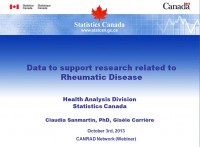
-200x186.jpg)
